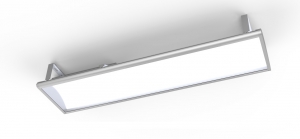Detecting cyanosis is a challenge for hospital medical staff and Empyrean Lighting has found a way to integrate LED technology to improve its early detection leading to improved response time for treatment.
A major priority in every hospital is the ability of medical staff to reliably detect cyanosis through clinical observation. Cyanosis occurs in patients when the tissues near the skin surface are low in oxygen – resulting in a blue/purple discoloration of the skin and mucous membranes. In order to correctly detect cyanosis, the lighting in all clinical observation areas must meet standards and be of the highest quality. In meeting these requirements, Empyrean Lighting has developed a cyanosis compliant LED Troffer luminaire – the first of its kind in Australia.
The Corona Medical Luminaire fully complies with the AS/NZS 1680.2.5:1997 and rates at 2.0 on the Cyanosis Observation Index (COI). Furthermore the luminaire’s colour correlated temperate lies with the standard range of 3300K and 5300K (~4250K). The luminaire also provides the inherent benefits of LED technology especially when compared to fluorescent tubes currently being used in a majority of medical facilities. LED technology uses 50% less energy than fluorescent tubes, lasts up to 5 times as long as fluorescent tubes (significantly reducing maintenance costs), generates very little heat which reduces loads on HVAC and maintains it spectral properties unlike its fluorescent counterparts.
Within the Corona Medical Luminaire range there are reflective and in-line design types. The reflective series are designed to minimize glare while providing ample lighting for task based work whereas the in-line version provides high intensity light where required which is ideal for detailed work environments.
Cyanosis compliant lighting is also available in our Vega Slim Line range which are ideal for replacing CFL (compact fluorescent lights) or halogen down lights.
